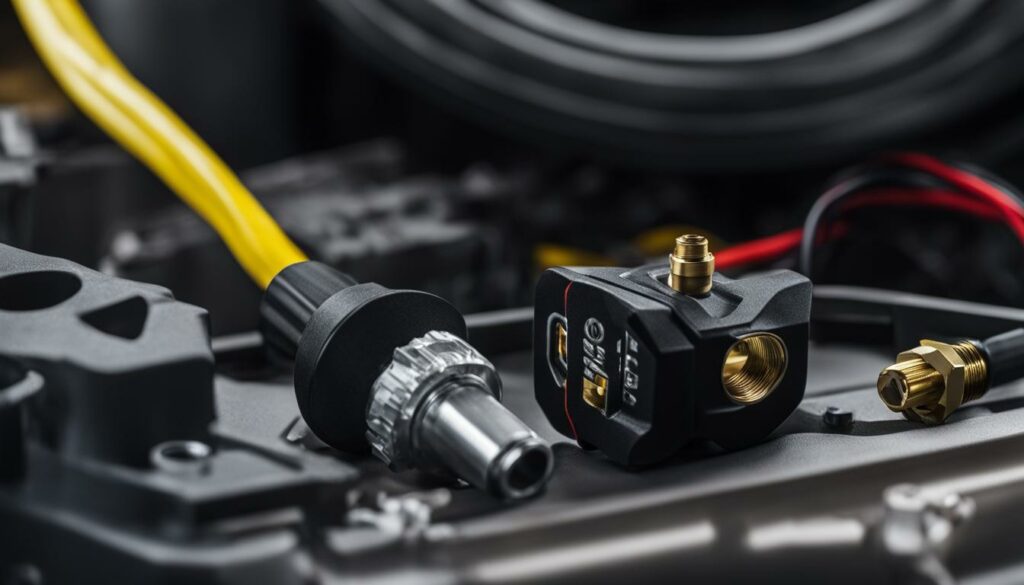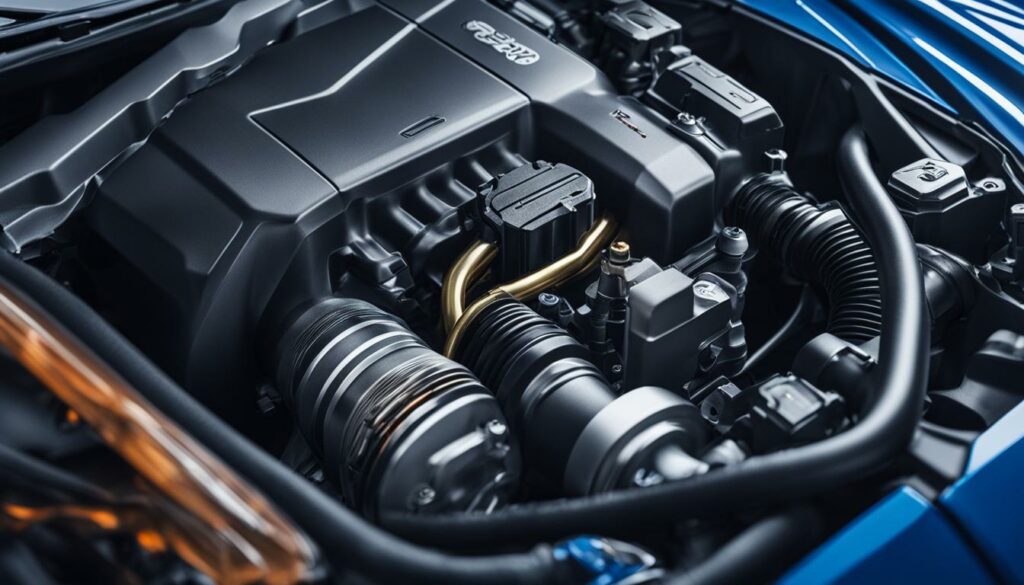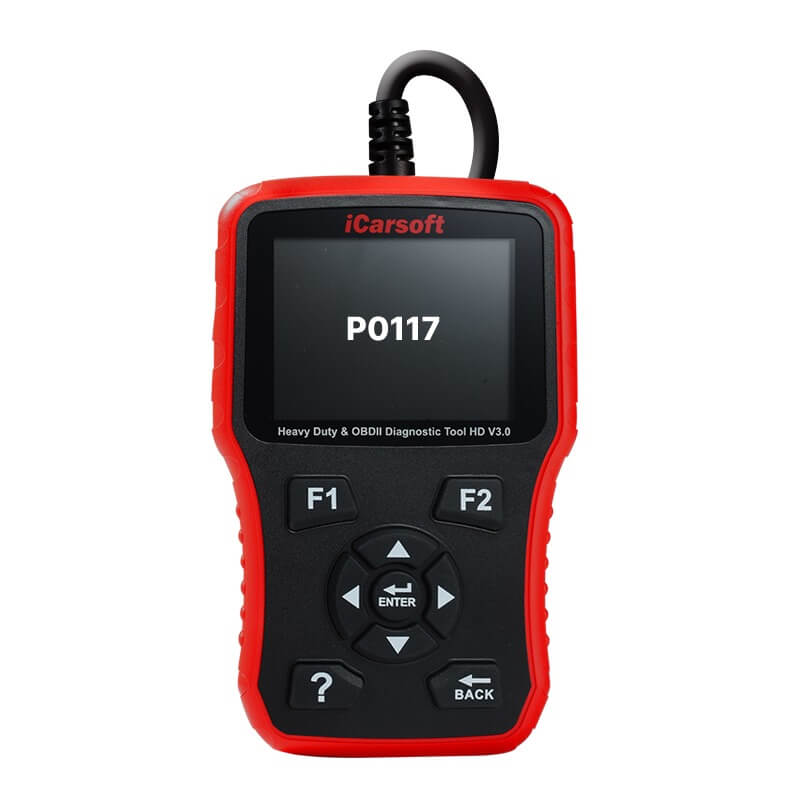P0117 – Engine Coolant Temperature Sensor Circuit Low
POSTED IN pcodes
Welcome to our comprehensive guide on the P0117 code – Engine Coolant Temperature Sensor Circuit Low. If you’re experiencing issues with your engine’s temperature sensor circuit or low coolant temperature, you’ve come to the right place. In this article, we will explore the symptoms, common causes, and troubleshooting steps for this diagnostic trouble code. By understanding the intricacies of the engine coolant temperature sensor and its circuit, you’ll be equipped with the knowledge to diagnose and resolve this issue effectively.
In modern vehicles, the coolant temperature sensor, also known as the engine coolant temperature (ECT) sensor, plays a vital role in monitoring the engine’s temperature. It is a thermistor that measures the temperature of the engine coolant. When the ECT sensor detects a voltage lower than the normal operating range, it triggers the P0117 code. This could be caused by a faulty ECT sensor, a short to ground in the sensor circuit, or issues with the wiring and connectors.
Experiencing the P0117 code can result in several symptoms, including poor fuel economy, poor drivability, a rough running engine, and the illumination of the check engine light. Additionally, you may encounter issues with idling and starting. It is important to note that these symptoms can also indicate other engine issues, making a thorough engine diagnostics crucial to pinpoint the underlying cause of the P0117 code.
To troubleshoot the P0117 code, it is recommended to follow the provided troubleshooting steps diligently. These steps include checking the ECT sensor reading, performing voltage checks, inspecting the wiring harness and connectors, and assessing the PCM voltage. Depending on the findings, you may need to replace the ECT sensor, repair any wiring or connector issues, or address potential PCM faults. Always refer to professional sources for detailed instructions and specific guidance tailored to your vehicle make and model.
Key Takeaways:
Buy tested tuning file for Adblue / EGR / DPF / Adblue off now!
- The P0117 code indicates an issue with the engine coolant temperature (ECT) sensor circuit.
- Symptoms may include poor fuel economy, poor drivability, a rough running engine, and the check engine light illuminating.
- Potential causes include a faulty ECT sensor, a short to ground in the sensor circuit, or wiring and connector issues.
- Troubleshooting steps involve checking the ECT sensor reading, performing voltage checks, and inspecting wiring and connectors.
- Addressing the P0117 code promptly is essential to prevent further engine performance issues.
Symptoms of P0117 – Engine Coolant Temperature Sensor Circuit Low
The P0117 code indicating an Engine Coolant Temperature Sensor Circuit Low can manifest in various symptoms that can affect your vehicle’s performance. It is crucial to be aware of these signs to identify and address the issue promptly. Some common symptoms of P0117 – Engine Coolant Temperature Sensor Circuit Low include:
- Poor fuel economy: A malfunctioning coolant temperature sensor can disrupt the engine’s fuel mixture and lead to decreased fuel efficiency.
- Poor drivability: As the sensor fails to provide accurate temperature readings, the engine’s performance may be compromised, resulting in a noticeable decrease in drivability.
- Rough running engine: The engine may exhibit irregular and rough running due to incorrect fuel injection and ignition timing caused by the faulty coolant temperature sensor.
- Check engine light: The illumination of the check engine light is a common indication of a problem, including the P0117 code, which should be addressed promptly.
Additionally, the engine may experience issues with idling and starting, such as prolonged cranking before the engine fires up. It is important to note that while these symptoms are commonly associated with P0117 – Engine Coolant Temperature Sensor Circuit Low, they can also be indicative of other issues. Therefore, a thorough engine diagnostics is necessary to confirm the P0117 code and identify its underlying cause.
Quote:
“Addressing the symptoms of P0117 – Engine Coolant Temperature Sensor Circuit Low is crucial to maintain optimal engine performance and avoid further damage.”
To further understand the symptoms and their implications, refer to the table below:
| Symptoms | Description |
|---|---|
| Poor fuel economy | Decreased mileage and efficiency due to improper fuel mixture. |
| Poor drivability | Reduced engine performance, affecting acceleration, responsiveness, and overall power delivery. |
| Rough running engine | Erratic engine operation characterized by vibrations, misfires, and uneven idling. |
| Check engine light | Illumination of the check engine light as a result of the P0117 code. |
| Issues with idling and starting | Prolonged cranking, difficulty in starting the engine, and unstable idling. |
By paying attention to these symptoms and seeking timely diagnostics, you can effectively address the underlying cause of P0117 – Engine Coolant Temperature Sensor Circuit Low, ensuring optimal engine performance and avoiding further complications.
Common Causes of P0117 – Engine Coolant Temperature Sensor Circuit Low
When diagnosing the P0117 code, it is essential to consider the common causes that can result in an Engine Coolant Temperature Sensor Circuit Low. Understanding these causes can help pinpoint the source of the issue and facilitate effective troubleshooting. The main common causes of P0117 are:
- Faulty ECT Sensor: One of the most common causes of the P0117 code is a faulty Engine Coolant Temperature (ECT) sensor. The ECT sensor is responsible for measuring the temperature of the engine coolant. If the sensor is malfunctioning and sending a voltage lower than the normal operating range, it can trigger the P0117 code.
- Short to Ground: Another cause of the P0117 code is a short to ground in the ECT sensor circuit. This can happen due to wiring issues or problems with the connectors. A short to ground can disrupt the normal functioning of the sensor and result in the low coolant temperature reading.
- Wiring Issues: The wiring harness that connects the ECT sensor to the engine control module (ECM) can experience issues over time. Damaged or corroded wiring can cause a disruption in the signal, leading to incorrect coolant temperature readings.
- Connector Issues: The connectors that join the ECT sensor and the ECM can also be a potential cause of the P0117 code. Loose or damaged connectors can result in poor electrical connections and affect the accuracy of the coolant temperature readings.
To effectively diagnose and resolve the P0117 code, it is crucial to inspect the ECT sensor, wiring harness, and connectors for any signs of damage or malfunction. Addressing these common causes can help restore the proper operation of the engine coolant temperature sensor circuit.
Recommended action:
If you encounter the P0117 code, consider the following steps:
- Inspect the ECT sensor for any signs of damage or malfunction.
- Check the wiring harness for any visible issues such as fraying, corrosion, or loose connections.
- Examine the connectors for any damage or signs of poor electrical connections.
- If necessary, replace the faulty ECT sensor, repair or replace damaged wiring, and ensure proper connections between the sensor and ECM.
| Common Causes | Description |
|---|---|
| Faulty ECT Sensor | The ECT sensor may be sending a voltage lower than the normal operating range, resulting in the P0117 code. The sensor itself can have internal issues causing the malfunction. |
| Short to Ground | A short to ground in the ECT sensor circuit can be caused by wiring issues or problems with the connectors. This can disrupt the normal functioning of the sensor and lead to the low coolant temperature reading. |
| Wiring Issues | Wiring problems, such as damaged or corroded wires, can disrupt the signal between the ECT sensor and the ECM. This can result in incorrect coolant temperature readings and trigger the P0117 code. |
| Connector Issues | Loose or damaged connectors between the ECT sensor and ECM can lead to poor electrical connections. This can affect the accuracy of the coolant temperature readings and cause the P0117 code. |

Troubleshooting Steps for P0117 – Engine Coolant Temperature Sensor Circuit Low
To troubleshoot the P0117 code, follow these steps:
- Use a scan tool to check the ECT sensor reading on the display. Compare the reading to the intake air temperature (IAT) sensor reading on a cold engine. If they do not match, replace the ECT sensor.
- If the ECT reading is excessively high, unplug the ECT sensor and check if the reading drops to the extreme cold reading. If it does, replace the sensor. If not, check for a short to ground in the ECT signal circuit and repair as necessary.
- If no wiring issues are found and the ECT reading does not drop to the extreme coldest when unplugged, check for voltage coming out of the PCM on the signal wire’s pin at the PCM connector. If there is no voltage or it is low, the PCM may be faulty.
- If the scan tool ECT reading seems normal, perform a “wiggle” test on the wiring harness and connectors while monitoring the ECT reading. Repair any loose or corroded wiring or connectors. Check the freeze frame data for the ECT reading at the time of failure.
Other related Diagnostic Trouble Codes (DTCs) to consider include P0115, P0116, P0118, P0119, P0125, and P0128.

These troubleshooting steps will help you diagnose and resolve the P0117 code related to the Engine Coolant Temperature Sensor Circuit Low. By following these steps and addressing any issues with the ECT sensor, wiring, or PCM, you can ensure the proper operation of your engine and prevent further performance issues.
Conclusion
The P0117 code, indicating an Engine Coolant Temperature Sensor Circuit Low, can be caused by various factors, including a faulty ECT sensor, wiring issues, or connector problems. To effectively diagnose and resolve this issue, it is crucial to perform a comprehensive engine diagnostics and follow the recommended troubleshooting steps provided in the sources.
By carefully inspecting the ECT sensor reading, comparing it to the intake air temperature sensor, and checking for any abnormalities in the signal wire’s voltage, you can pinpoint the exact cause of the P0117 code. If the ECT sensor is determined to be defective, replacing it with a new one is often necessary to restore optimal engine performance.
Addressing the P0117 code promptly is essential to prevent further engine performance issues and ensure the proper functioning of the coolant temperature sensor circuit. By understanding the common causes and following the recommended troubleshooting steps, you can effectively resolve this issue and maintain the reliability of your engine.
FAQ
What does the P0117 code mean?
The P0117 code indicates an issue with the engine coolant temperature (ECT) sensor circuit.
What is the engine coolant temperature sensor?
The engine coolant temperature sensor (ECT sensor) is a thermistor that measures the temperature of the engine coolant.
What are the symptoms of P0117 – Engine Coolant Temperature Sensor Circuit Low?
Some common symptoms include poor fuel economy, poor drivability, a rough running engine, and the illumination of the check engine light.
What are the common causes of P0117 – Engine Coolant Temperature Sensor Circuit Low?
The common causes include a faulty ECT sensor, short to ground in the ECT sensor circuit, wiring issues, or connector problems.
What are the troubleshooting steps for P0117 – Engine Coolant Temperature Sensor Circuit Low?
The troubleshooting steps include checking the ECT sensor reading, performing a voltage check, replacing the ECT sensor if necessary, checking for a short to ground, and checking the PCM voltage.


